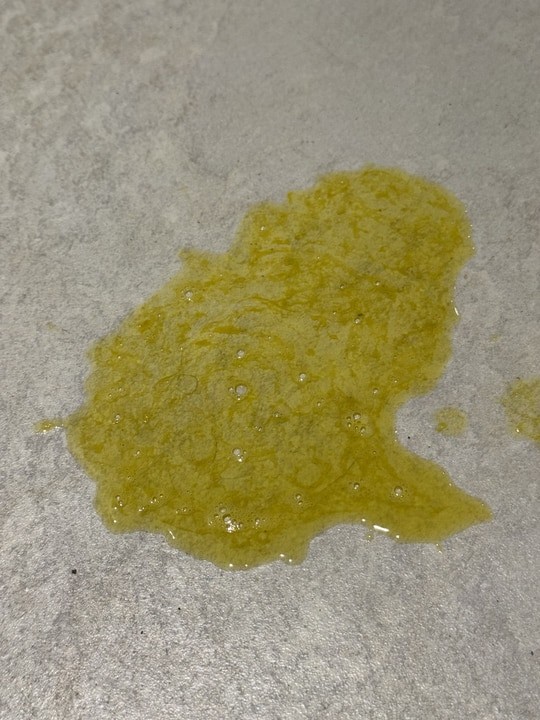Seeing your dog vomit is always concerning, especially when it’s yellow. This yellow color often indicates bile, a digestive fluid produced in the liver. While occasional yellow vomit might not be a cause for immediate alarm, frequent or persistent episodes warrant a trip to the veterinarian. This article explores the common reasons why your dog might be throwing up yellow bile, when to seek veterinary attention, and how to help soothe your furry friend’s upset stomach.
 yellow bile in dogs; a pile of yellow vomit from a dog.
yellow bile in dogs; a pile of yellow vomit from a dog.
A photo of yellow vomit, indicating the presence of bile. The yellow color is a key indicator that your dog may need veterinary attention.
Common Causes of Yellow Vomit in Dogs
Several underlying conditions can lead to yellow vomit in dogs. Here are some of the most common culprits:
Bilious Vomiting Syndrome (BVS)
BVS often occurs in the morning after a long period without food. When the stomach is empty, bile can reflux into the stomach, causing irritation and vomiting. This is often seen in dogs who eat only once a day. A late-night snack or smaller, more frequent meals can sometimes resolve this issue.
Gastrointestinal Issues
Various gastrointestinal problems can trigger yellow vomit, including:
- Inflammatory Bowel Disease (IBD): Chronic inflammation of the digestive tract.
- Ulcers: Sores in the stomach or intestinal lining.
- Infections: Bacterial or viral infections affecting the gut.
- Parasites: Intestinal parasites disrupting digestion.
- Cancer: Tumors in the digestive system.
Pancreatitis
Inflammation of the pancreas, often caused by a high-fat diet or unknown factors, can result in yellow vomit, abdominal pain, and diarrhea.
Addison’s Disease
This endocrine disorder, characterized by insufficient production of stress hormones, can lead to vomiting, among other symptoms.
Intestinal Blockages
A foreign object lodged in the intestines can obstruct the digestive tract, causing vomiting, lethargy, and severe abdominal pain. This is a medical emergency requiring immediate veterinary attention.
Allergies
Food allergies can trigger vomiting. Common allergens include beef, dairy, wheat, chicken, and corn. Identifying and eliminating the allergen from your dog’s diet is crucial.
When to Seek Veterinary Care
While a single episode of yellow vomit might not be an immediate emergency, consult your veterinarian if:
- Vomiting occurs more than once in 24 hours.
- Your dog exhibits other symptoms like lethargy, diarrhea, loss of appetite, or abdominal pain.
- Vomiting is chronic, even if infrequent.
- Your dog is a puppy or senior.
Managing Your Dog’s Upset Stomach
After consulting with your veterinarian, you can try the following to help soothe your dog’s upset stomach:
- Fasting: Withhold food for 12-24 hours to allow the stomach to settle.
- Bland Diet: Introduce small amounts of easily digestible food like boiled chicken and rice.
- Small, Frequent Meals: Offer several small meals throughout the day instead of one or two large ones.
Conclusion
Yellow vomit in dogs can be caused by a range of conditions, from mild to life-threatening. Careful monitoring and prompt veterinary attention when necessary are crucial for ensuring your dog’s health and well-being. By understanding the potential causes and knowing when to seek help, you can provide the best possible care for your furry companion. Always consult with your veterinarian before making any changes to your dog’s diet or administering any medications.
